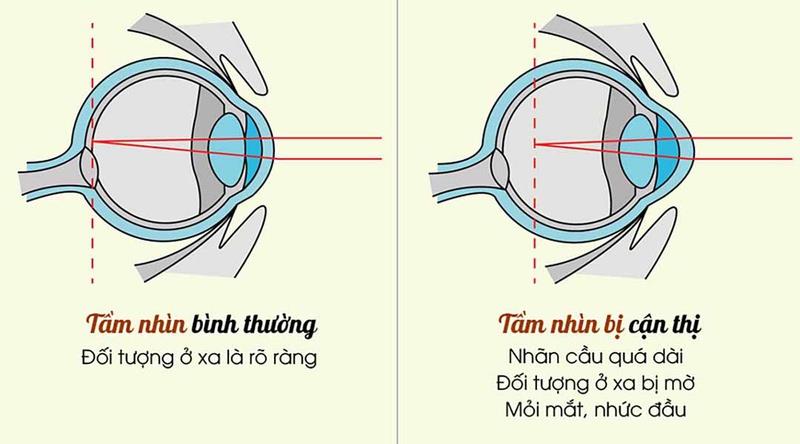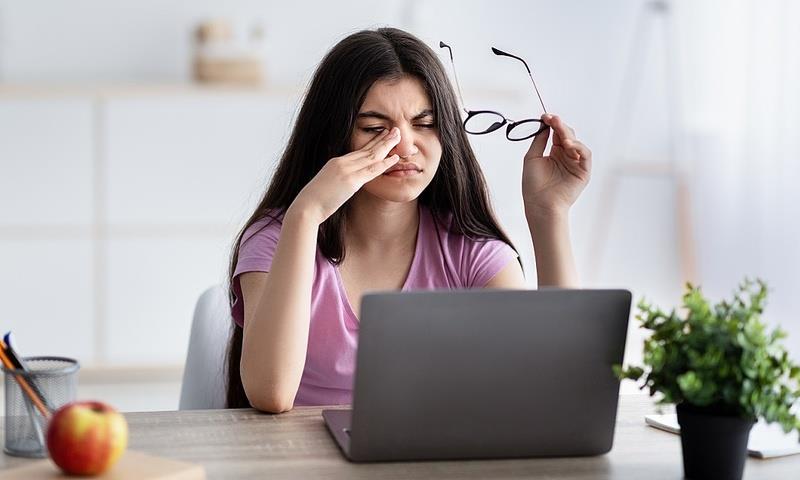What is false myopia? How to know?

In fact, besides myopia, there are symptoms of false myopia or temporary myopia. So what exactly is false myopia, how to recognize false and true myopia?
Myopia is one of the most common refractive errors today. With symptoms such as eye strain, inability to see objects at a distance… many people mistakenly think they are nearsighted.
However, in fact, besides myopia, there are symptoms of false myopia or temporary myopia. This symptom is often encountered in people who often have to work with computers or electronic devices, when wearing near-sighted glasses, their eyes are bright and clear. So what exactly is false myopia, how to recognize false and true myopia? Let us learn more about this issue through the article below.
What is false myopia? Signs of false myopia
False myopia can also be considered a disease or a refractive error in the eye, but this is only a temporary condition and has a similar appearance to myopia. Usually, people with false myopia will have symptoms similar to myopia, meaning that they cannot see objects at a distance, but can only see objects at close range clearly.
However, people with false myopia usually only experience this condition for a certain time and it does not last too long. False myopia is also defined as a temporary and intermittent change in the refractive power of the eye. The cause of the phenomenon of false myopia is due to excessive contraction of the ciliary muscle, which increases the refractive power of the eye, leading to the condition that people with false myopia cannot see distant objects. This makes many people mistaken for myopia.
 Many people often confuse between nearsightedness and false myopia
Many people often confuse between nearsightedness and false myopia
Pseudo-myopia is also divided into two types: organic pseudo-myopia and functional pseudo-myopia.
- Physical pseudomyopia is a condition in which the parasympathetic nervous system is over-excited.
- Functional pseudo-myopia is a condition in which false myopia occurs due to visual fatigue.
Distinguish between true myopia and false myopia
Myopia and pseudo-myopia are relatively similar, so many people confuse these two refractive errors. Distinguishing between true myopia and false myopia is not too difficult. Usually, to be able to accurately determine whether they have true myopia or not, people with eye problems should go to ophthalmological medical facilities to be examined and measured by on-site optometrists. This will help determine if the patient is nearsighted or not.
If you want to determine for yourself whether you have false myopia or not, you can refer to some of the following signs of false myopia:
 Working at a computer for a long time is one of the causes of false myopia
Working at a computer for a long time is one of the causes of false myopia
- The ability to see far is worse: In fact, office workers or students who have to work and study for a long time, stress will often cause eye fatigue or watery eyes. eyes, the ability to see far is also worse and often have to squint when looking at distant objects.
- Eye strain when wearing myopia: Usually when encountering signs such as blurred vision, unable to see far, many people will think they are nearsighted and immediately go to measure myopia to wear. However, after 1 to 2 weeks of wearing glasses, people with false myopia will feel sore eyes and often have headaches. This is because the number of degrees of glasses does not match the condition of the eye, which in the long run can lead to true nearsightedness.
- However, to be able to determine the most accurate way about whether they have fake or real myopia, the patient should go to an eye specialist medical facility to be examined by a doctor.
Methods of treating false myopia
False myopia is only a temporary condition, so the treatment is quite simple and not too complicated. Here are some methods of treating false myopia that you can refer to and apply:
Building a reasonable lifestyle to prevent false myopia
- Have a mode of living and resting in moderation: For people with false myopia due to working at an inappropriate distance and distance, they should adjust the distance when working and studying. At the same time, you should build a reasonable rest and activity regime to help your eyes return to normal.
- Regularly massage and relax your eyes: Let your eyes rest for 5 to 10 minutes after every 01 hour of working or studying. Try to look at the blue spaces to relax your eyes.
- Increase the intake of foods rich in vitamins A , E, B, D and use eye drops to combat fatigue and eye degeneration.
In case of severe false myopia, the patient should move to medical facilities to be prescribed by a doctor to use specialized glasses to adjust the eyes.
Myopia and pseudo-myopia are generally not too dangerous refractions. Hopefully this article of ours has helped you better understand these refractive errors and be able to distinguish between nearsightedness and false myopia or temporary myopia in the most accurate way.